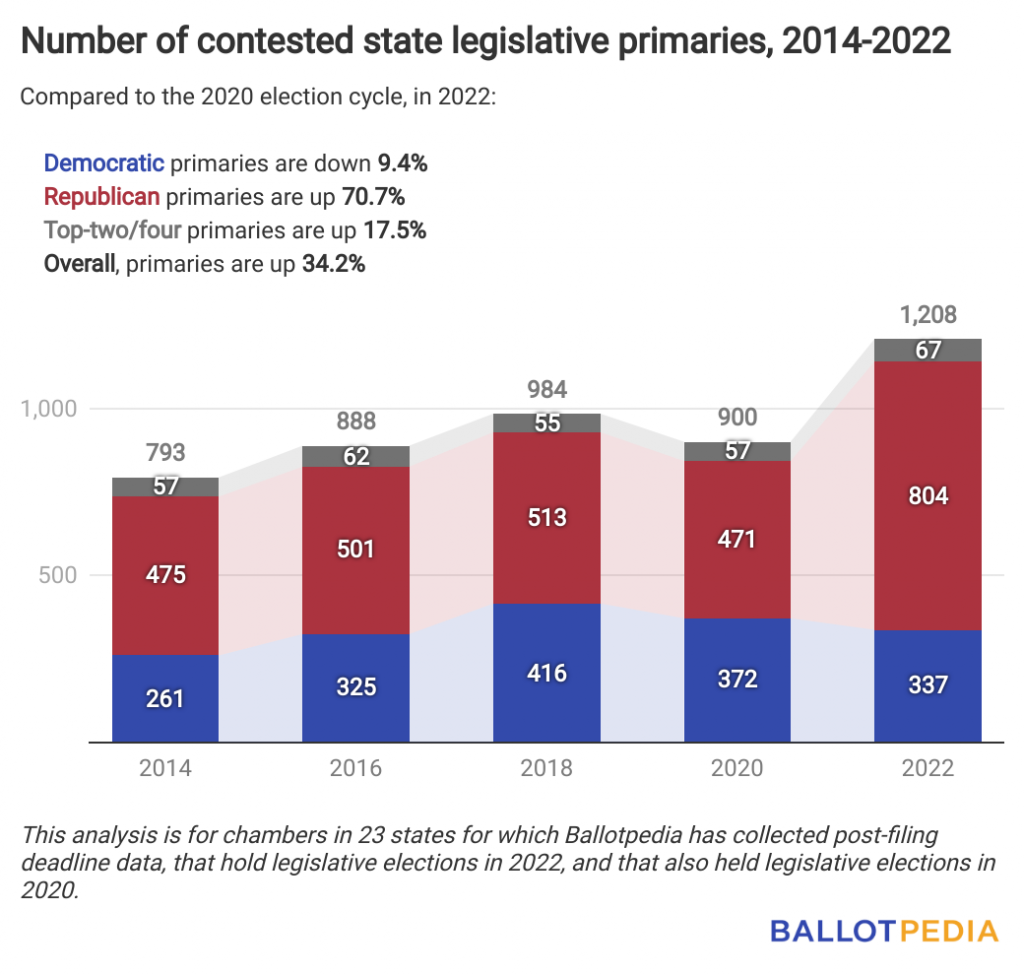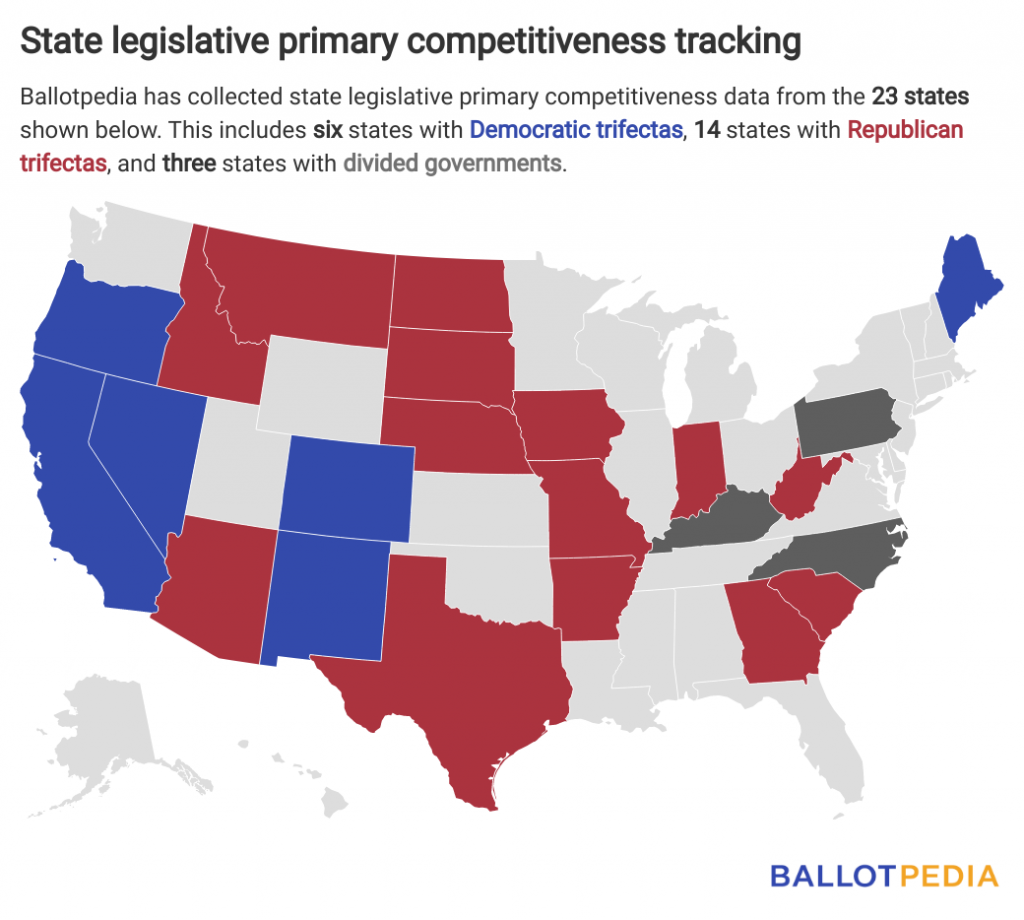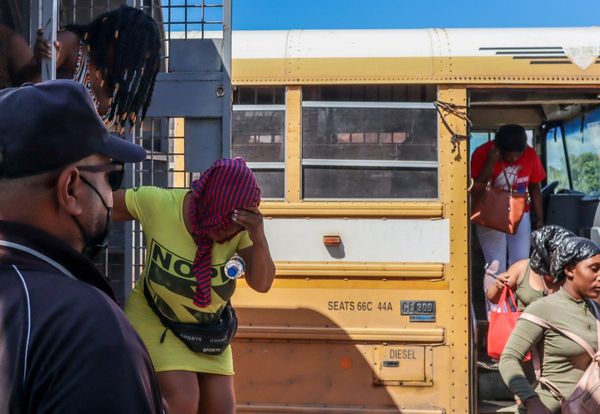There are 34% more contested state legislative primaries this year than in 2020, including 71% more Republican primaries and 18% more top-two/four primaries. Democratic primaries are down 9%.
These figures include elections in 23 states that account for 2,862 of 6,166 state legislative seats up for election this year (46%).
A primary is contested when there are more candidates running than available nominations, meaning at least one candidate must lose.

Since our last update on May 23, we have added post-filing deadline data from Colorado, Missouri, and South Carolina. Overall, six states in this analysis have Democratic trifectas, 14 have Republican trifectas, and three have divided governments.

Of the 23 states in this analysis, 21 are holding partisan primaries. Two states—California and Nebraska—use top-two primaries.
The number of Democratic primaries has increased in eight states, decreased in 10, and remains the same in two. The number of Republican primaries has increased in 20 states and decreased in one. The table below shows partisan statistics for the three states with the largest increases and decreases so far.

In addition to a state’s political makeup and party activity, redistricting is another reason for an increase in primary competitiveness.
After redistricting, some states—like Arkansas—hold elections for every district, while in other years, fewer districts are up each cycle. This creates more opportunities for primaries to occur. Or, like in West Virginia, redistricting creates new districts and, by extension, more primary opportunities. Currently, the total number of possible primaries affected by these changes is up 0.3% compared to 2020.
For states like New Mexico and South Carolina, where only one chamber is up for election every two years, only those chambers holding elections in 2022 that also held elections in 2020 are included.
Ballotpedia will continue to update these figures as information becomes available. In addition to this analysis, Ballotpedia collects competitiveness statistics at all levels of government, available here. This data is calculated following candidate filing deadlines and readjusted at the time of the primary to account for any changes to candidate lists.
Learn More






